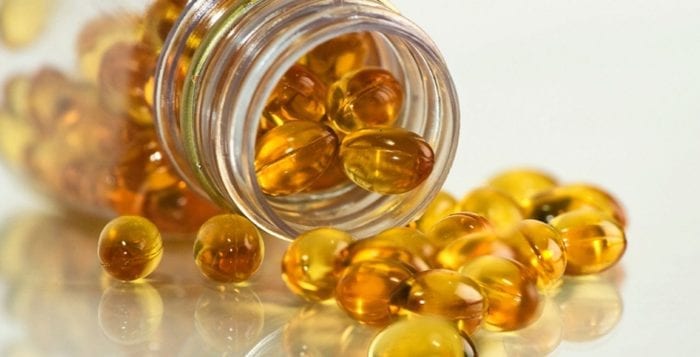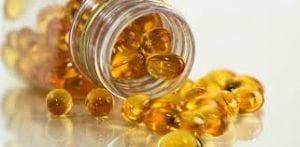In most geographic locations, sun exposure will not correct vitamin D deficiencies
By David Dunaief, M.D.

Vitamin D is one the most widely publicized and important supplements. We get vitamin D from the sun, food and supplements. With our days rapidly shortening here in the Northeast, I thought it would be worthwhile to explore what we know about vitamin D supplementation.
Vitamin D has been thought of as an elixir for life, but is it really? There is no question that, if you have low levels of vitamin D, replacing it is important. Previous studies have shown that it may be effective in a wide swath of chronic diseases, both in prevention and as part of the treatment paradigm. However, many questions remain. As more data come along, their meaning for vitamin D becomes murkier. For instance, is the sun the best source of vitamin D?
At the 70th annual American Academy of Dermatology meeting, Dr. Richard Gallo, who was involved with the Institute of Medicine recommendations, spoke about how, in most geographic locations, sun exposure will not correct vitamin D deficiencies. Interestingly, he emphasized getting more vitamin D from nutrition. Dietary sources include cold-water fatty fish, such as salmon, sardines and tuna.
We know its importance for bone health, but as of yet, we only have encouraging — but not yet definitive — data for other diseases. These include cardiovascular and autoimmune diseases and cancer.
There is no consensus on the ideal blood level for vitamin D. The Institute of Medicine recommends more than 20 ng/dl, and The Endocrine Society recommends at least 30 ng/dl. More experts and data lean toward the latter number.
Skin cancer
Vitamin D did not decrease nonmelanoma skin cancers (NMSCs), such as squamous cell and basal cell carcinoma. It may actually increase them, according to one study done at a single center by an HMO (1). The results may be confounded, or blurred, by UV radiation from the sun, so vitamin D is not necessarily the culprit. Most of the surfaces where skin cancer was found were sun exposed, but not all of them.
The good news is that, for postmenopausal women who have already had an NMSC bout, vitamin D plus calcium appears to reduce its recurrence, according to the Women’s Health Initiative study (2). In this high-risk population, the combination of supplements reduced risk by 57 percent. However, unlike the previous study, vitamin D did not increase the incidence of NMSC in the general population. NMSC occurs more frequently than breast, prostate, lung and colorectal cancers combined (3).
Cardiovascular mixed results
Several observational studies have shown benefits of vitamin D supplements with cardiovascular disease. For example, the Framingham Offspring Study showed that those patients with deficient levels were at increased risk of cardiovascular disease (4).
However, a small randomized controlled trial (RCT), the gold standard of studies, calls the cardioprotective effects of vitamin D into question (5). This study of postmenopausal women, using biomarkers such as endothelial function, inflammation or vascular stiffness, showed no difference between vitamin D treatment and placebo. The authors concluded there is no reason to give vitamin D for prevention of cardiovascular disease.
The vitamin D dose given to the treatment group was 2,500 IUs. Thus, one couldn’t argue that this dose was too low. Some of the weaknesses of the study were a very short duration of four months, its size — 114 participants — and the fact that cardiovascular events or deaths were not used as study end points. However, these results do make you think.
Weight benefit
There is good news, but not great news, on the weight front. It appears that vitamin D plays a role in reducing the amount of weight gain in women 65 years and older whose blood levels are more than 30 ng/dl, compared to those below this level, in the Study of Osteoporotic Fractures (6).
This association held true at baseline and after 4.5 years of observation. If the women dropped below 30 ng/dl in this time period, they were more likely to gain more weight, and they gained less if they kept levels above the target. There were 4,659 participants in the study. Unfortunately, vitamin D did not show statistical significance with weight loss.
Mortality decreased
In a meta-analysis of a group of eight studies, vitamin D with calcium reduced the mortality rate in the elderly, whereas vitamin D alone did not (7). The difference between the groups was statistically important, but clinically small: 9 percent reduction with vitamin D plus calcium and 7 percent with vitamin D alone.
One of the weaknesses of this analysis was that vitamin D in two of the studies was given in large amounts of 300,000 to 500,000 IUs once a year, rather than taken daily. This has different effects.
USPSTF recommendations
The U.S. Preventive Services Task Force recommends against giving “healthy” postmenopausal women the combination of vitamin D 400 IUs plus calcium 1,000 mg to prevent fractures (8). It does not seem to reduce fractures and increases the risk of kidney stones. There is also not enough data to recommend for or against vitamin D with or without calcium for cancer prevention.
Need for clinical trials
We need clinical trials to determine the effectiveness of vitamin D in many chronic diseases, since it may have beneficial effects in preventing or helping to treat them (9). Right now, there is a lack of large randomized clinical trials. Most are observational, which provides associations, but not links. The VITAL study is a large RCT looking at the effects of vitamin D and omega-3s on cardiovascular disease and cancer. It is a five-year trial, and the results should be available in 2018.
When to supplement?
It is important to supplement to optimal levels, especially since most of us living in the Northeast have insufficient to deficient levels. While vitamin D may not be a cure-all, it may play an integral role with many disorders.
References: (1) Arch Dermatol. 2011;147(12):1379-1384. (2) J Clin Oncol. 2011 Aug 1;29(22):3078-3084. (3) CA Cancer J Clin. 2009;59(4):225-249. (4) Circulation. 2008 Jan 29;117(4):503-511. (5) PLoS One. 2012;7(5):e36617. (6) J Women’s Health (Larchmt). 2012 Jun 25. (7) J Clin Endocrinol Metabol. online May 17, 2012. (8) AHRQ Publication No. 12-05163-EF-2. (9) Endocr Rev. 2012 Jun;33(3):456-492.
Dr. Dunaief is a speaker, author and local lifestyle medicine physician focusing on the integration of medicine, nutrition, fitness and stress management. For more information, visit www.medicalcompassmd.com.













